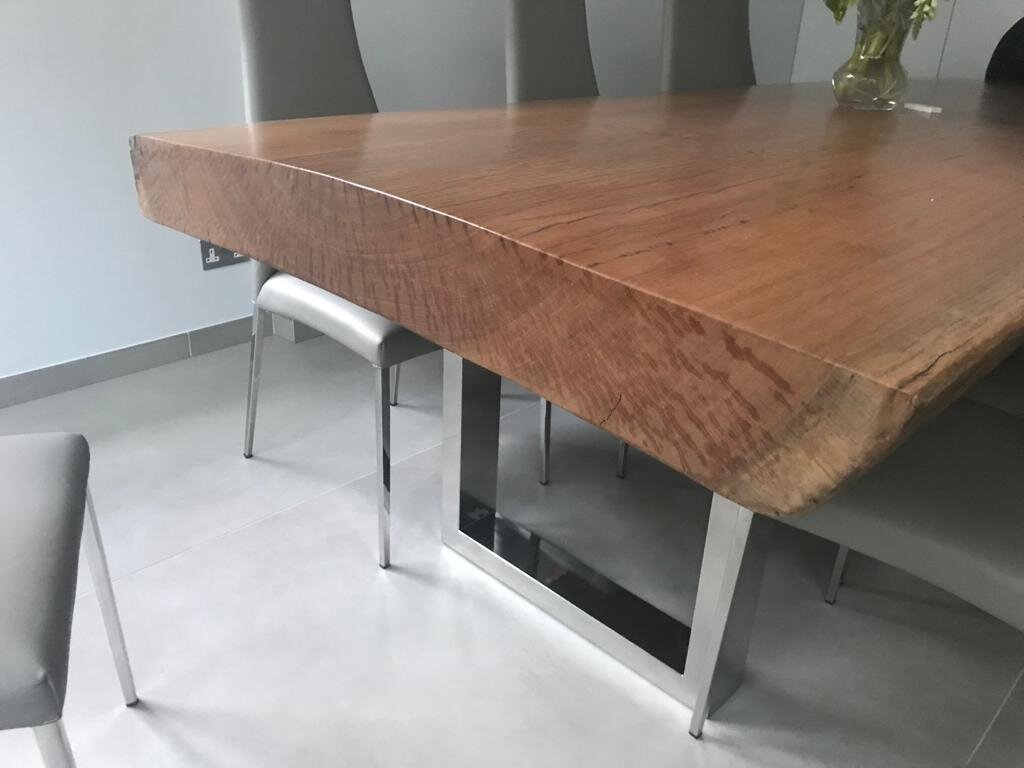When furniture-buying goes wrong
Not long ago I was approached by a client asking if I could convert some thick slabs of some tropical hardwood into small ‘re-saleable’ items for him. This was a rather odd request so I asked him how he came by these chunks of timber and he told me the following story.
A few years back, he came across some photos of a table for sale online and decided it was just what he was looking for. This company was based over in Ireland, claiming to source the timber (which they claimed was ‘Iron Wood’) from Malaysia and used it to make tables and other such items for the home. The client bought said table for the not-so-tiny sum of £5k and the table was shipped over to him.
Fast forward a year or so and the table had cupped HUGELY. He contacted the company, telling them he was returning it to them and that he wanted a refund or replacement. For one reason or another, the company were not happy to offer either of these solutions so the client instead asked them to cut the top up into smaller pieces and ship them back to him here in the UK (a rather odd request from my perspective, but hey ho) where he would find someone to convert them into products he could sell online and hopefully recover some of his costs.
I found this whole story rather strange and when I asked him for photos of the table I was shocked to see the following images.
Now, any good furniture maker out there who knows anything about wood, could tell you straight away that this table had been doomed to fail from the beginning. Taking a cut-through of a log like this, at this thickness, would require a huge amount of force to keep flat. Wood is a living thing and even after the tree is cut down, it is constantly trying to achieve an equilibrium between the moisture content in the air and that in it’s cells.
Put simply; look at the rings on the end of the piece of wood and imagine that those rings are going to try and flatten out. Without a force stronger than that of the tree’s to hold it down, the wood will cup. Simply screwing some metal legs to the underside will do absolutely nothing to solve this problem.
Of course, there are ways to manipulate the timber to counter-act this force, and this is where the expertise of the Maker comes in. A knowledge of wood and the techniques of woodworking is essential if you’re going to make a good piece of furniture that will be both functional and long-lasting. (For those interested in reading what these solutions are, see my post on Designing for Wood Movement).
When taking on this job, I did some research into the timber itself and found that Malaysian Iron Wood is, unsurprisingly, a protected tree. It’s possible to grow it in plantations for the purpose of cutting down and selling, but these plantation trees never reach a diameter anywhere near that of this tree. I therefore concluded that not only was this table made badly, but the tree that it was made from was most likely felled and logged illegally.
The company who built this table clearly knew nothing about wood and did not care about the longevity of the pieces they sell, let alone the sustainability of the materials they used. This is why I always recommend that people buy from smaller companies, who live and breathe the work that they do. As a furniture maker I take great pride in the work I produce and so I’m always pretty mind-blown when I see things like this, where there’s clearly no consideration of the material itself or the fabrication process.
All I can say is do your research! Buy well, buy once.
PS . I did take on the job – see below for photos of the pieces I made for my client to re-sell.










